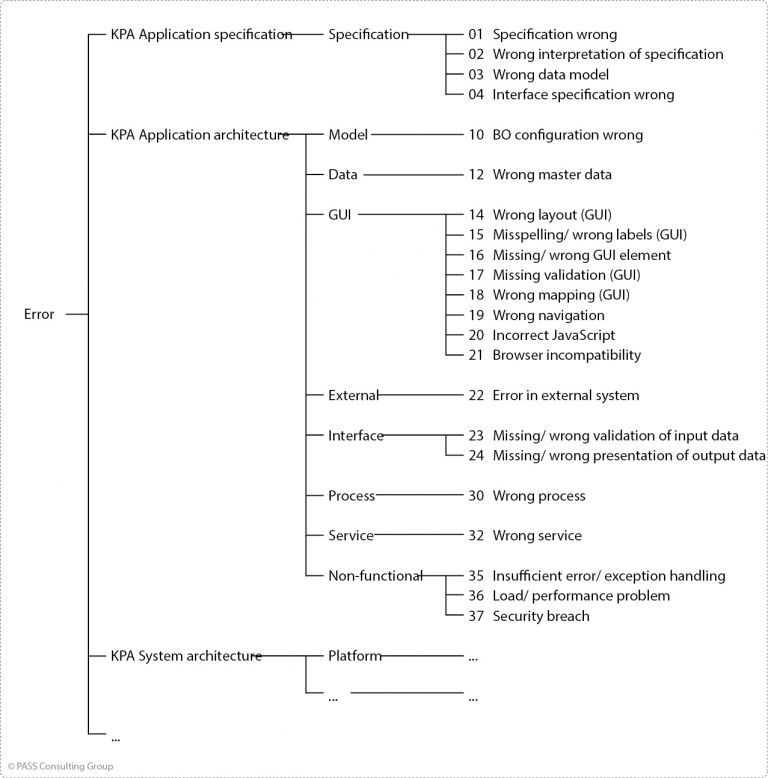Every error is an opportunity in Software Development
Software development is a magical art of creating a program that, following a set of processes, can perform a required task.The development of software involves countless steps such as thinking about an idea, developing a rough concept, implementing the blueprint, testing, fixing bugs and much more.
Software development is a process by which a specific programming language is used to create stand-alone or individual software. It includes writing a sequence of interrelated programming code that gives the advanced software’s functionality. Software development can also be called development of applications and design of software.
>> Looking for Software Development? : Connect with Sales

Analyzing defects can enhance quality sustainabily. Any flaws dealing with the effects only causes costs and problems. On the other hand, the quality is improved by defects that can be prevented from occurring over and over again due to the sustained treatment of their root cause. You save money in the form of costs of uncured correction. The effort to analyze the cause of an error is therefore not an additional effort, but an investment that pays off quickly.
A targeted improvement in productivity and quality can be achieved in software development through the cyclical repetition of measurements, evaluations and optimizations. Analysis of errors is therefore an essential part of this process.
Naturally, when processing an error, the focus is on correcting it in order to eliminate the user’s system usage constraints. In many instances, agreed reaction or troubleshooting times involve a fast focus on a solution, even if it is only a solution that does not deter long-term mistake.
The search for the root cause
This report initially describes only the effects if a defect is reported, i.e. what the user perceives as deviating from the expected result or system behavior. This is, of course, a significant piece of data that needs an accurate check to see if it is a departure from the initial criteria, a misuse or a fresh requirement. At the beginning of the chain, however, it is crucial to find the exact cause, based on the description of the defect, which is the effect at the end of the cause-and-effect chain. Once it has been found, it is necessary to check if another problem or negligence has caused it as well. This backward reconstruction of the cause-and-effect chain, also known as analyzing the root cause, generally finishes with an issue that could cause further flaws. When this issue is solved, all defects created by this will be eliminated and future defects will be avoided.
Methodically, it helps to focus on the 5-Why technique in practice, in which several (not necessarily five) questions about why are asked.Only if this question is no longer meaningfully answered will the cause of the defect be found with high probability, which can provide indications of an effective measure of improvement. The error message can serve as an example, stating that the user can not alter the content of a particular mask field, although his function should allow him to alter it.
>> Looking for a Software Development team? : Connect with Sales

Travel Agency System
The importance of standardized defect classes
It may be recommended to standardize the error causes across the company for the practical application of root cause analysis and to ensure that only root causes are selected from this scheme. In the applied ticketing system or error tracking tool, this can be done by a picklist technically. Standardization is essential for simple assessment of root cause category error frequency. These show in which areas, due to the related number of errors, improvement measures are likely to be most effective.To stay with the above instance: if 25 percent of all identified mistakes can be allocated to the ‘ specification incorrect ‘ category, it should be evident to leaders that they have an issue with specification development and quality assurance. But, in other words, with likely few targeted interventions, they also have the opportunity to enhance their error rate by 25 percent and save heavy bug fixing expenses.
For the leadership model outlined in our “Increasing Software Development Productivity” book sequence, the findings of the assessment of error causes are significant input factors of the assessment stage in relation to KPIs. In turn, the findings of this stage form the foundation for the optimization stage, which seeks the most efficient enhancement measures within the Key Performance Areas (KPAs). To make this easier, the scheme of the highest level defect classes should already be grouped by the relevant fields of action.
A periodic root cause analysis of mistakes appears at first glance to be an extra effort compared to the rapid elimination of impacts. However, if the management model is effective, an effective root cause analysis will save the organization money. The next paper in this series demonstrates how through periodic surveillance of productivity and defect density this can be made transparent and regulated.
